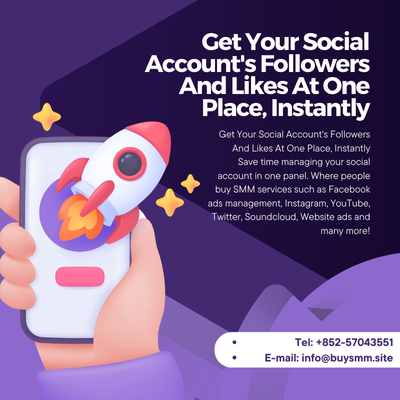
Social boosting refers to the practice of artificially increasing your social media metrics—such as followers, likes, views, or comments—through paid services. These services are designed to make your accounts appear more popular and engaging by providing instant boosts in numbers. While the concept may seem attractive, especially to new users or businesses trying to build credibility quickly, social boosting comes with significant pros and cons that need to be considered.
At its core, social boosting aims to create “social proof.” When people see an account with thousands of followers or a video with millions of views, they’re more likely to view that content as valuable or trustworthy. This can increase curiosity, attract organic traffic, and potentially improve your reputation. For new accounts, this initial boost can help break through the early stage where it’s difficult to get attention.
However, most social boosting services do not bring real engagement. The followers or interactions gained are usually from bots or inactive accounts. While your numbers might look impressive on the surface, the actual impact on engagement is minimal. Social media platforms like Instagram, TikTok, and YouTube heavily rely on engagement rates—such as likes per post, comments per view, or watch time per video—to decide what content to promote. If your account has thousands of fake followers but very little genuine interaction, your reach and visibility may suffer in the algorithm.
Another concern is the risk of detection. Platforms are increasingly using AI and machine learning to identify fake activity. If you’re caught using social boosting services that violate platform guidelines, your account could face penalties. These include the removal of fake followers, shadowbanning (reduced visibility), or in extreme cases, permanent suspension.
There’s also the matter of credibility and trust. Today’s audiences are more informed and cautious. Many users and potential partners can tell when an account’s engagement doesn’t match its follower count. If a brand or influencer appears to have inflated numbers without real interaction, it can raise doubts and harm their reputation. For businesses, this can mean losing potential customers or collaboration opportunities.
Despite these risks, not all forms of social boosting are harmful. Some marketing services offer ethical boosting strategies that comply with platform rules. For example, running paid ads, promoting posts to targeted audiences, or collaborating with influencers are all legitimate ways to boost visibility and gain real followers. These methods take time and budget but lead to sustainable growth with genuine engagement.
In summary, social boosting can offer a temporary increase in metrics that may help with initial visibility or credibility. However, relying solely on artificial boosts without focusing on real content and engagement is risky and often counterproductive. For long-term success, the best strategy is to build your presence organically by creating high-quality content, engaging with your audience, and using ethical promotional tactics. In the end, real people are what matter—not just inflated numbers.
